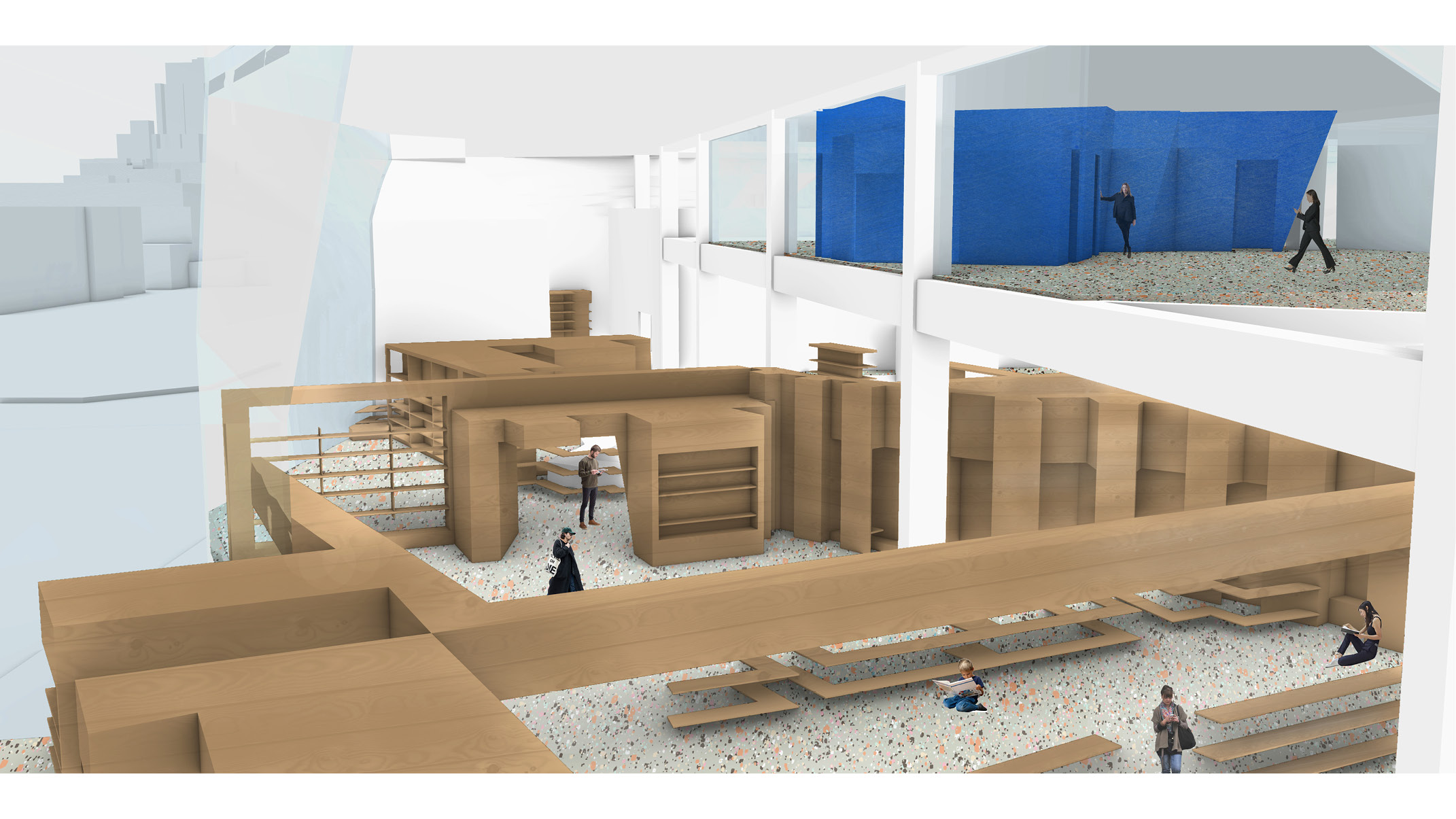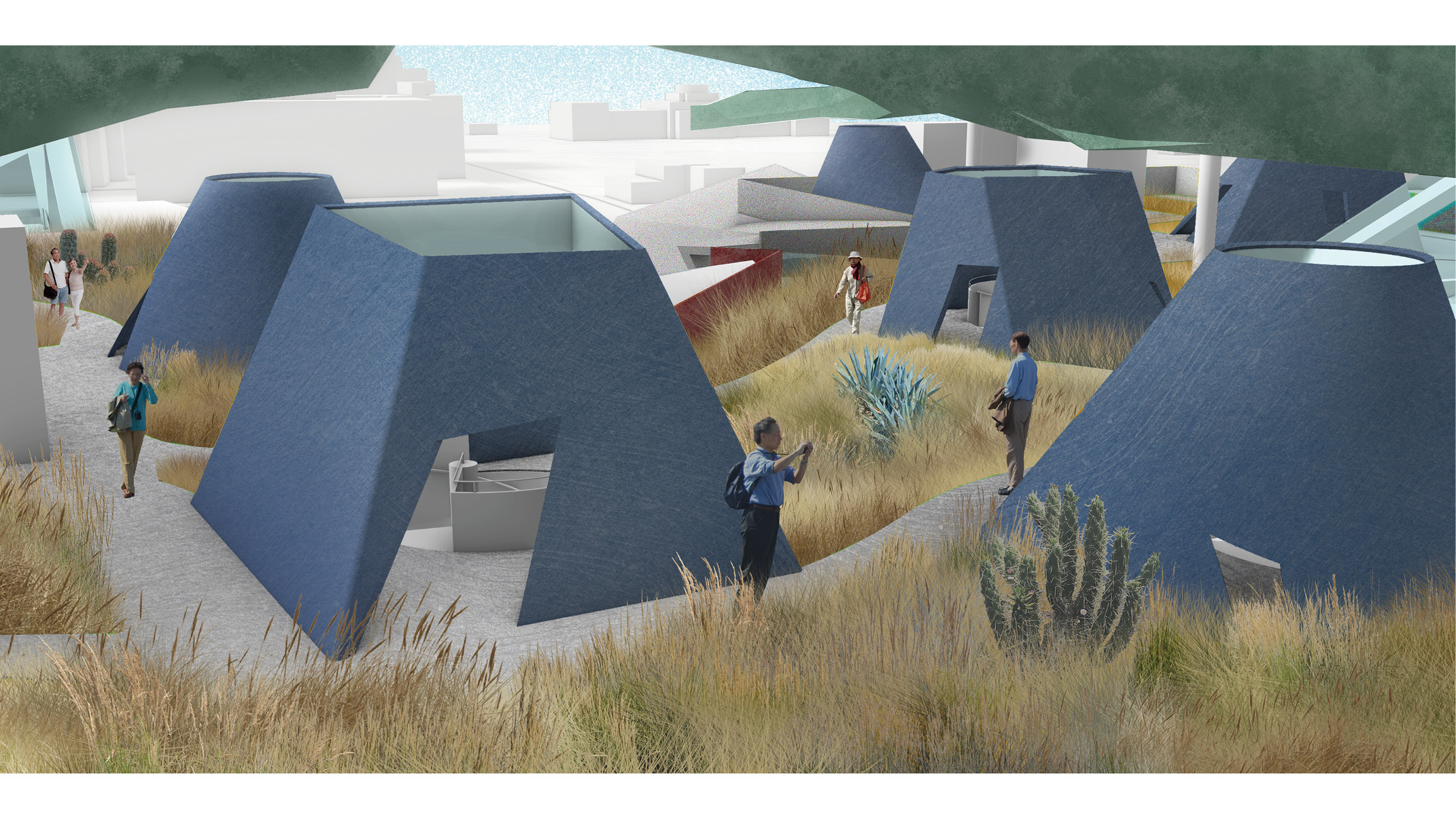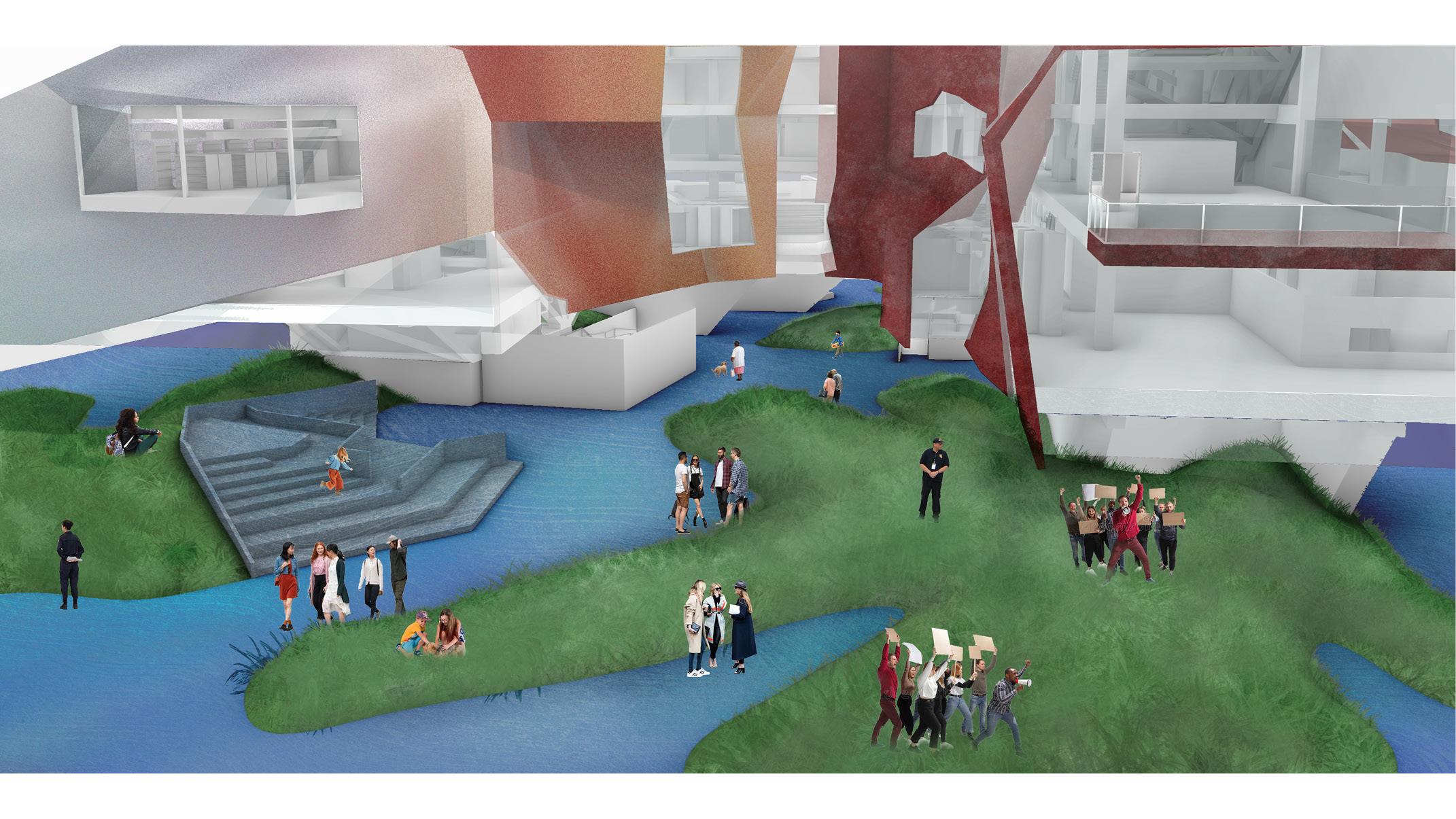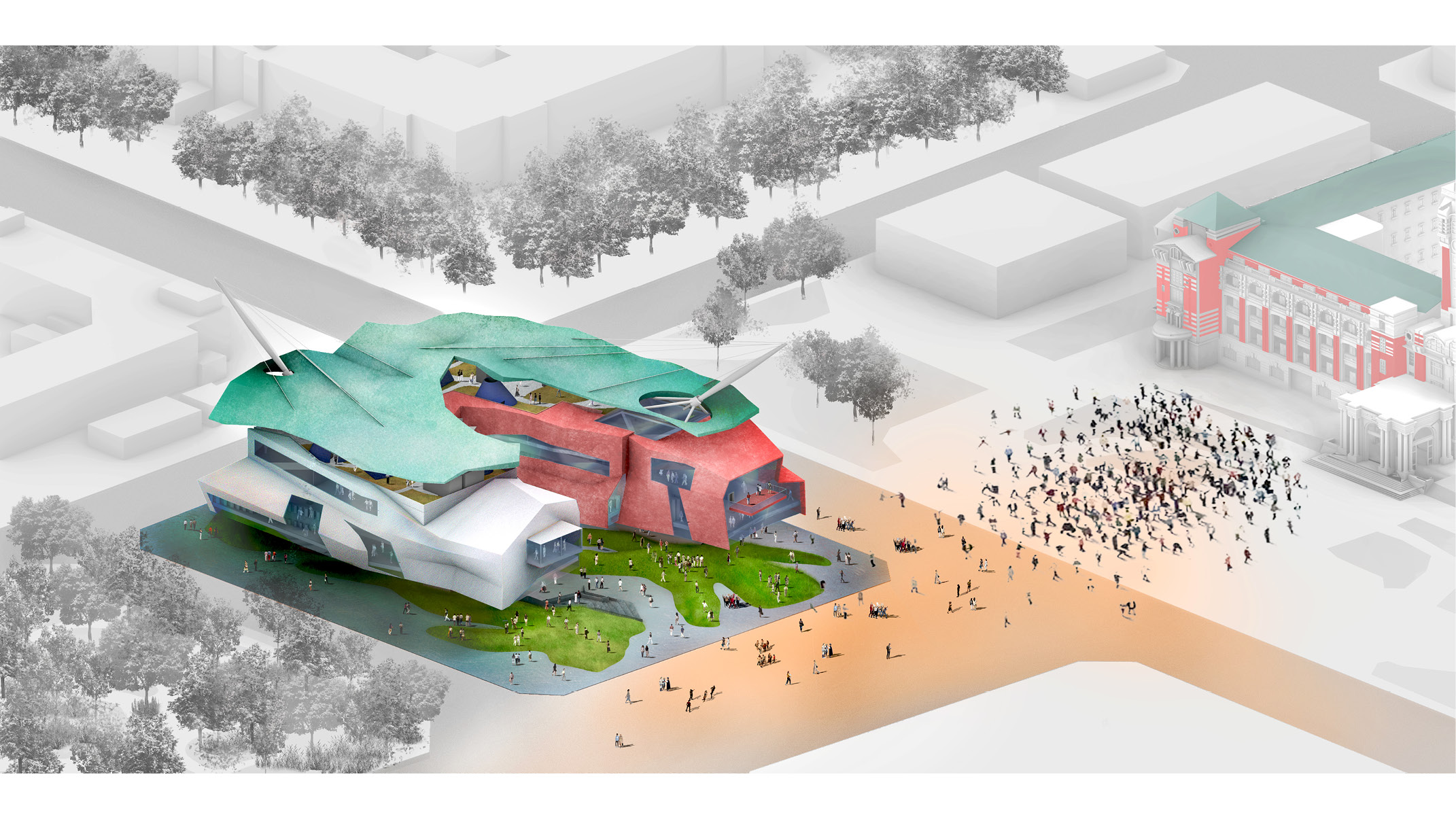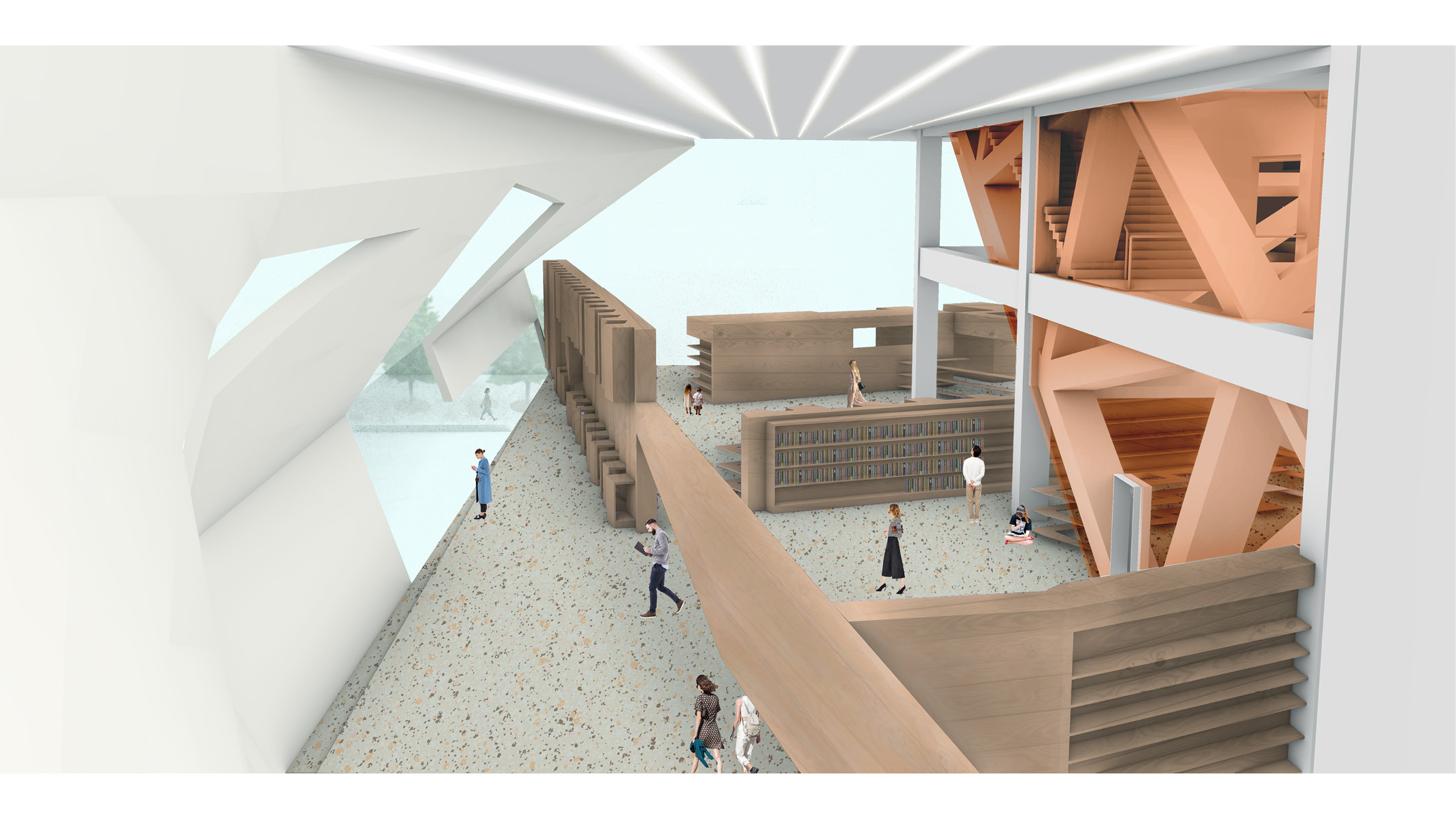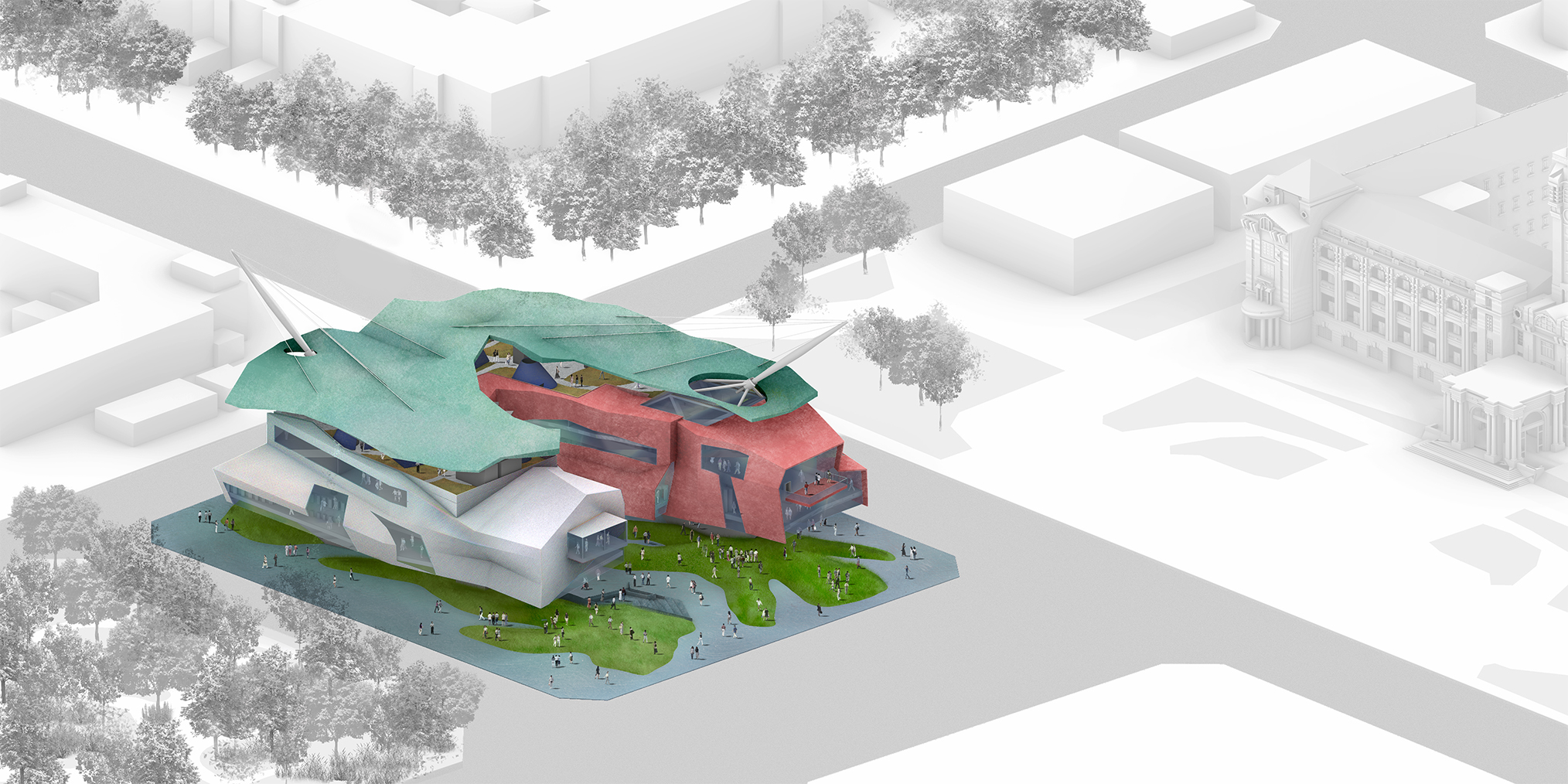a presidential library
1.
background
artery of democracy
Right at the endpoint of Ketagalan Boulevard--the artery of democracy that leads directly to the country's Presidential Office, the people deserve their last parcel of vocal land of freedom. Ketagalan Boulevard is always a gathering place for protest events. However, there is still one block distance between the Presidential Office and the protesters. People’s sound seems to be hard to convey. The open artery, at the same time, couldn’t be a shelter for them to escape from heavy rain and the burning sun. A sense of isolation and unfamiliarity is intensified between the governor and us.
2.
intention
an enlargement and a new center of democracy
A presidential office is an opportunity for residents to get acquainted with the history of political development and also a new redefined hub for the protesters to express their requisition and dissatisfaction toward the government. The enlargement of democracy and the relationship with architecture triggered the project to review the fabric of Taipei castle in the past. The reaction to the current building senary in Taipei city also exists in the design.
3.
method/process
Mapping of Taipei’s context: present and past
The landscape on the ground level is mapping the Keelung River--the mother river on which the city of Taipei is nurtured and prospered. This common ground gathers the vociferous citizens with their dynamic prospects toward the nation's future. The “river”, the blue concrete way running through the landscape, alludes to the tradition in which people would sit in line on the sides of a crystal brook, expressing their notion and vision of a topic alongside the flow of the water -- the democratic container of thoughts. Here, the symphony of a diverse advocacy is being composed.
The civilization nourished by the river is stacked as collective memories. The tilted circulation core acts as the wormhole through which visitors travel between keystones in history that significantly influenced this Midtown Area and the city beyond. Starting with the level, the building was raised nine meters above the ground. Ching Dynasty’s urban fabric, which is formed through administrative clusters within the castle wall, is translated into bookshelves, nooks, and partitions within this level, which comprises a library, a restaurant, and a flexible event space open to the public. The grid of more contemporary city planning in the Japanese colonial era informs the floor pattern and specific areas within the open office on the administration level. This level hovers over the public space below as a U-shape bar.
4.
result
As the collective memory of history and as the cloud of community-presidential library
Finally, one arrives at the top as a detached reader of a piece of history. Here stories rewind, reminding us of the hard-fought democracy and the special but delicate status of peace and freedom. Visitors find ways back to the past within this landscaped garden or the primitive heathland. Through the doorways and spirals down the stairs, one arrives at the reproduced study of one of the former presidents. People come with different reasons and points of view, while history is here to be reread and re-felt through dialogue, with the disturbance of the outside world temporarily left behind.
On top of everything, one should never forget the omnipresent land that has accompanied and brought us to where we are today. The ragged form of the roof outlines the silhouette of the hills surrounding a basin, which defines the locus of the city of Taipei. The land is our origin and home, under which the memories of history will finally be buried eternally.
The presidential library is a piece of a floating cloud. It humbly reflects and displays the colors of its surroundings. It stores the dynamic collective memories of the nation without preconception. It provides shade while generously sparing the land with freedom below. Nevertheless, it will always be there as the cloud of the people and the collective memory of the island's history.
background
artery of democracy
Right at the endpoint of Ketagalan Boulevard--the artery of democracy that leads directly to the country's Presidential Office, the people deserve their last parcel of vocal land of freedom. Ketagalan Boulevard is always a gathering place for protest events. However, there is still one block distance between the Presidential Office and the protesters. People’s sound seems to be hard to convey. The open artery, at the same time, couldn’t be a shelter for them to escape from heavy rain and the burning sun. A sense of isolation and unfamiliarity is intensified between the governor and us.
2.
intention
an enlargement and a new center of democracy
A presidential office is an opportunity for residents to get acquainted with the history of political development and also a new redefined hub for the protesters to express their requisition and dissatisfaction toward the government. The enlargement of democracy and the relationship with architecture triggered the project to review the fabric of Taipei castle in the past. The reaction to the current building senary in Taipei city also exists in the design.
3.
method/process
Mapping of Taipei’s context: present and past
The landscape on the ground level is mapping the Keelung River--the mother river on which the city of Taipei is nurtured and prospered. This common ground gathers the vociferous citizens with their dynamic prospects toward the nation's future. The “river”, the blue concrete way running through the landscape, alludes to the tradition in which people would sit in line on the sides of a crystal brook, expressing their notion and vision of a topic alongside the flow of the water -- the democratic container of thoughts. Here, the symphony of a diverse advocacy is being composed.
The civilization nourished by the river is stacked as collective memories. The tilted circulation core acts as the wormhole through which visitors travel between keystones in history that significantly influenced this Midtown Area and the city beyond. Starting with the level, the building was raised nine meters above the ground. Ching Dynasty’s urban fabric, which is formed through administrative clusters within the castle wall, is translated into bookshelves, nooks, and partitions within this level, which comprises a library, a restaurant, and a flexible event space open to the public. The grid of more contemporary city planning in the Japanese colonial era informs the floor pattern and specific areas within the open office on the administration level. This level hovers over the public space below as a U-shape bar.
4.
result
As the collective memory of history and as the cloud of community-presidential library
Finally, one arrives at the top as a detached reader of a piece of history. Here stories rewind, reminding us of the hard-fought democracy and the special but delicate status of peace and freedom. Visitors find ways back to the past within this landscaped garden or the primitive heathland. Through the doorways and spirals down the stairs, one arrives at the reproduced study of one of the former presidents. People come with different reasons and points of view, while history is here to be reread and re-felt through dialogue, with the disturbance of the outside world temporarily left behind.
On top of everything, one should never forget the omnipresent land that has accompanied and brought us to where we are today. The ragged form of the roof outlines the silhouette of the hills surrounding a basin, which defines the locus of the city of Taipei. The land is our origin and home, under which the memories of history will finally be buried eternally.
The presidential library is a piece of a floating cloud. It humbly reflects and displays the colors of its surroundings. It stores the dynamic collective memories of the nation without preconception. It provides shade while generously sparing the land with freedom below. Nevertheless, it will always be there as the cloud of the people and the collective memory of the island's history.
diagram drawings and pictures



plans



sections



visualizations
